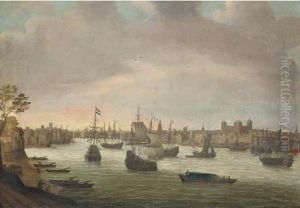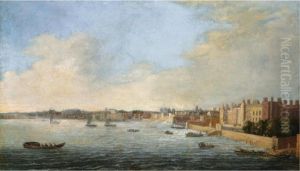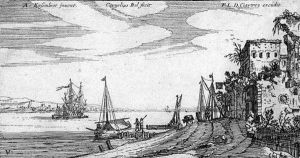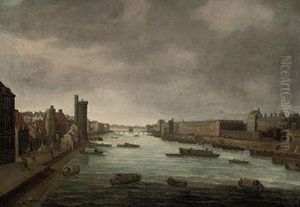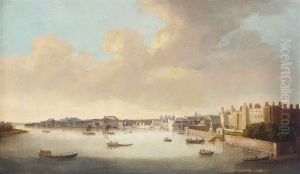Cornelis Bol Paintings
Cornelis Bol was a Dutch Golden Age painter, known for his contributions to landscape and marine painting. Born in 1534 in Gouda, Netherlands, Bol's career unfolded during a period of significant artistic innovation and cultural transformation in Europe. Despite the lack of comprehensive records about his early life and training, it is believed that he was part of the vibrant artistic milieu of the Dutch Golden Age, a period marked by the flourishing of arts and sciences in the Netherlands.
Bol's work demonstrates a keen interest in capturing the interplay between light and water, with many of his paintings featuring seascapes and coastal scenes. He was adept at conveying the mood and atmosphere of the maritime environment, often highlighting the transient beauty of the sea and sky. His landscapes, on the other hand, reflect a serene and harmonious view of the Dutch countryside, with meticulous attention to detail and a masterful use of color to create depth and perspective.
Throughout his career, Cornelis Bol exhibited a remarkable ability to evolve his style and technique, reflecting the broader trends within the Dutch Golden Age of painting. He was influenced by the works of contemporaries and predecessors alike, integrating elements of realism and naturalism into his compositions. Bol's paintings were not only appreciated for their aesthetic value but also for their ability to evoke the sublime nature of the world, aligning with the period's growing interest in exploring and understanding the natural landscape.
Despite his contributions to the art world, Cornelis Bol did not achieve the same level of fame as some of his contemporaries, such as Rembrandt or Vermeer. However, his work remains an important part of the Dutch Golden Age legacy, offering insights into the era's artistic movements and the evolving relationship between humanity and the natural world. Bol passed away in 1589, leaving behind a body of work that continues to be studied and admired for its beauty and historical significance.
